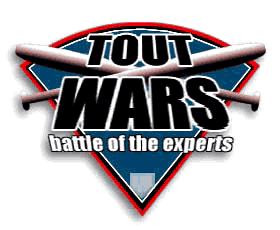 $260 per team. $3120 per league. These are the bedrock facts of Rotisserie baseball pricing.
$260 per team. $3120 per league. These are the bedrock facts of Rotisserie baseball pricing.
The NL screwed things up for a while, when 16 teams led most roto leagues to play with 13 teams. $3380 doesn’t resonate quite the same way, but the principle is quite the same when it comes to pricing.
There is a finite amount of value above replacement, and it costs a specific amount. Let’s call that $3120.
But does it have to be that way? No.
Some years ago my friend John Hogan put together a league with no salary cap. Twelve teams, American League, pay what you want for every player. No maximum amount you can spend. You always have another dollar to spend, if you want to. If you feel you need to, is perhaps the better way to say it.
Crazy, right? Well, I played in the league for two years and it was exhilarating. The prices meant something, but they weren’t tethered. Spending more on Mike Trout didn’t mean having less to spend on Jason Verlander. A team was never officially in Dollar Days. There’s something a little wicked about that, and dizzying, too.
But I only played for two years because there were some issues.
One, it was not a keeper league. One of the best ways to ensure that teams have good reasons to bring different budgets to the auction is because they’re operating on different timelines. A team building to win two or three years in the future will endeavor to spend less then, in order to make a bigger push later. In a startup league, you have to spend enough to compete that year.
But the various owners in this league had vastly different relationships to their money. Some of the owners were Wall Street traders and real estate moguls, for whom a few grand was of no consequence, while others of us were students and fantasy baseball writers. We weren’t broke, but we didn’t have thousands of dollars to wager on a prize structure that returned a fair percentage of every extra dollar wagered to the winner (who was going to be someone who spent a strong multiple more than we did—no matter how much we spent).
The prize structure was deep. Prize money was paid to everyone but the bottom two or three finishers. Maybe a percentage or two, then a few, then five percent to eighth place, etc, etc, up to second place, maybe 17 percent, and first place, maybe 30 percent.
What ended up happening is that the contest turned into one of tiers. There were the high order teams, who spent thousands. The winner in that group not only won the league, but they made money. Finishing second and third might be mean losing a little, or winning a little.
The middling teams spent perhaps $1200 to $1800 and battled for the middle spots. Again, the top finishers in this group would make a little, and those at the bottom of the tier would lose.
And then there were the bottom feeders, who spent maybe $600 to $1000. These teams were battling not to finish eighth, which made solid money, and not finish 11th or 12th, which meant losing everything.
As you can see, this was less interesting than the free for all we had imagined. Rather than competing on a grand scale, it was like competing in a small sub league. There may have been some crossover, but it was minor. Resources in a startup league rule.
This is why the league fell apart. The exhilaration turned to ultra awareness of the limits that money brought with it. But I don’t think it has to be that way.
Two changes would make for all the fun of no limit, while ensuring that everyone could play.
There must be keepers. Enough to allow teams to collect future players for cheap and play with a limited budget in some years, saving up to go for it in others. The object is to blow up the tyranny of rational pricing. We’ll save the particulars until we get this league going, but for now let’s settle on this: We need keepers.
And the payouts shouldn’t rise linearly. If I know that 30 cents of every dollar is going to come back to me if I win, my deep pockets know that I’m spending at a discount. And isn’t winning the thing?
Here’s my idea for how to break that a bit.
 Cap the winning share. Say that coming in first is worth $2400. Every one of the 12 teams knows that their odds are 1 in 12, so they have $200 invested in that prize. The distribute prize money to the runners up. Maybe paying off second, then third etc, or paying each off as a percentage. The idea is that at each level of decline the payout would be half then next. Call that Zeno’s Payout.
Cap the winning share. Say that coming in first is worth $2400. Every one of the 12 teams knows that their odds are 1 in 12, so they have $200 invested in that prize. The distribute prize money to the runners up. Maybe paying off second, then third etc, or paying each off as a percentage. The idea is that at each level of decline the payout would be half then next. Call that Zeno’s Payout.
If team’s paid in the full amount of this scheme the cost would be $400 per team, but only the 12th place team would actually pay that. And maybe they wouldn’t, because the “full amount” would just be a suggested amount. If teams on average spent more than $400 there would be extra money to distribute. I would suggest paying sixth place until it reached $150, then seventh the same, then eighth, etc. The idea is to put a real cost on going for it, without limiting what a team that is going for it can do.
And then again, maybe you have a better idea. The point here is to create a game that has a different sort of valuation system, something more fluid, more flexible, allowing players to bring different approaches in their strategies other than the zero sum game of regular roto.
It could be magical.
Thus concludes our series on the Top 10 Most Misunderstood Fantasy Concepts, at least for now. Now, draft well. We’re going to more practical matters as the season approaches.



You must be logged in to post a comment.